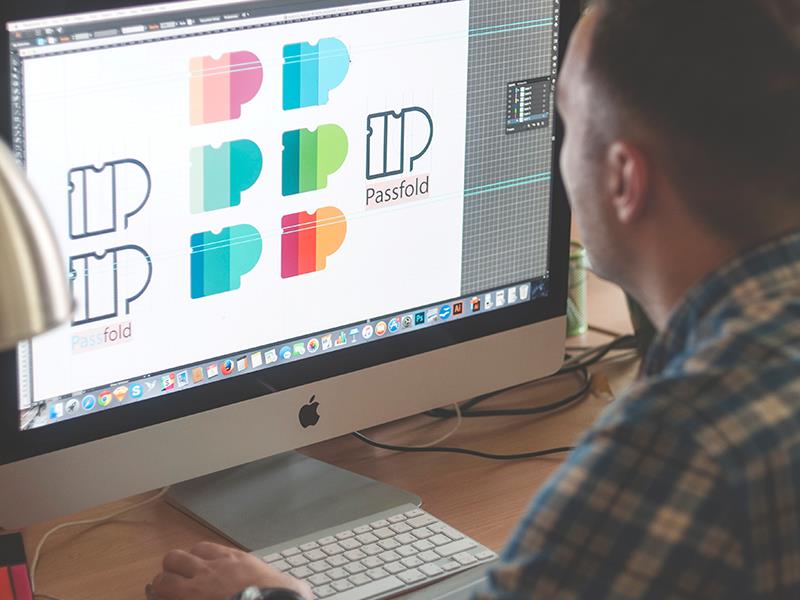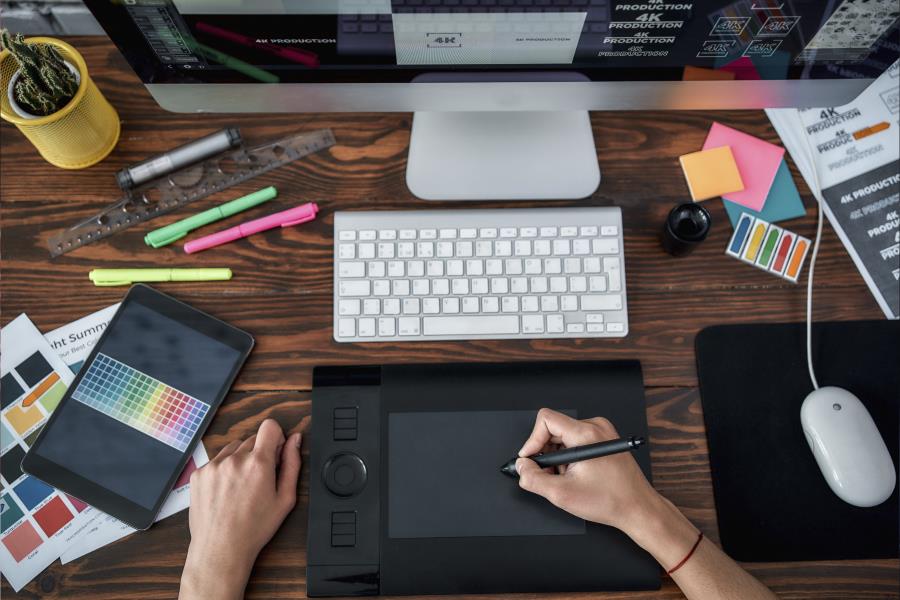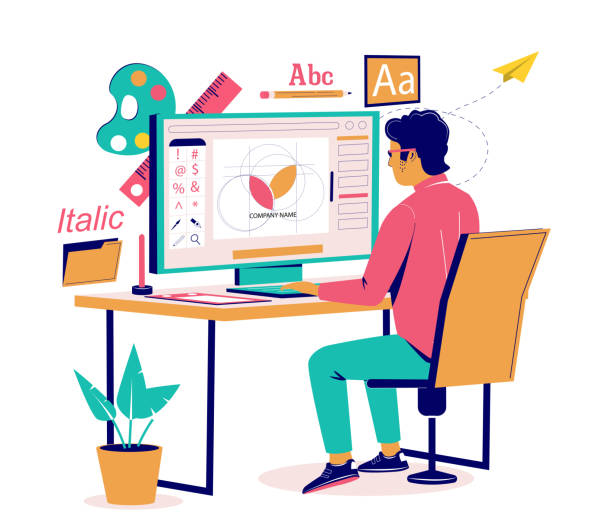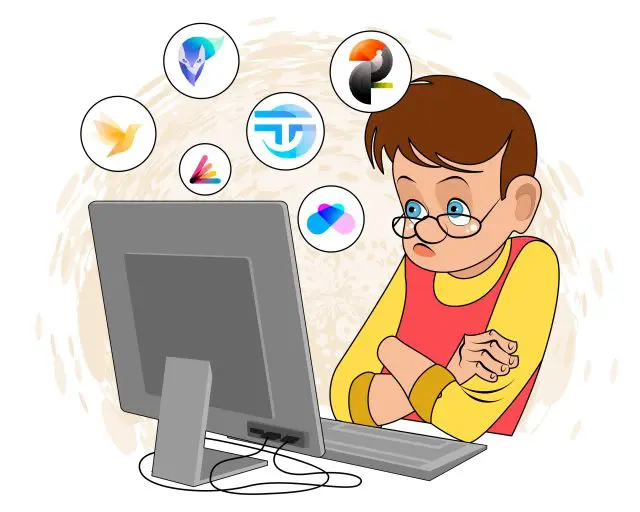
In today's competitive market, a professional logo has the power to elevate your brand and set it apart from the rest.
But how do you create a logo that truly represents your brand's identity and resonates with your target audience?
This article presents 7 essential steps that will guide you through the process of designing a professional logo.
From understanding your brand identity to refining your design, these strategic steps will ensure that your logo stands out and leaves a lasting impression.
Understand Your Brand Identity
To fully comprehend and effectively communicate your brand identity, it is imperative to conduct thorough research and analysis. Understanding your brand messaging and visual storytelling is crucial in creating a strong and cohesive brand image.
Brand messaging involves crafting a compelling message that resonates with your target audience and communicates the essence of your brand. It is about articulating your unique value proposition and differentiating yourself from competitors.
Visual storytelling, on the other hand, utilizes images, colors, and design elements to convey your brand story visually. It helps evoke emotions and create a memorable and engaging experience for your audience.

Research Your Target Audience
To create a professional logo that resonates with your target audience, it is essential to conduct thorough research on their demographics and preferences. Understanding who your customers are and what they value will allow you to design a logo that effectively communicates your brand message.
Demographics and Preferences
How can you effectively research the demographics and preferences of your target audience?
Conducting demographic analysis and studying consumer behavior are crucial steps in understanding your target audience. Here are three strategies to help you gather valuable insights:
Surveys: Create well-designed surveys to gather demographic information such as age, gender, location, and income. Ask questions about their preferences, interests, and purchasing habits to gain deeper insights into their behavior.
Social Media Listening: Monitor social media platforms to understand how your target audience interacts with brands, what they like, and what they dislike. Analyze their comments, reviews, and conversations to identify trends and preferences.
Competitor Analysis: Study your competitors' customer base to identify overlaps and differences. Look for patterns in their marketing strategies, messaging, and branding to gain insights into what resonates with your target audience.
Effective Communication Strategies
Understanding your target audience is essential in developing effective communication strategies for your brand. Building a strong brand requires a deep understanding of who your customers are and what they value. By researching your target audience, you can gain valuable insights into their needs, wants, and desires.

This knowledge will help you create a visual representation of your brand that resonates with your audience and communicates your message effectively. A professional logo is a crucial element in this process, as it serves as a visual representation of your brand identity. It should be visually appealing, memorable, and reflect the values and personality of your brand.
Define Your Logo Design Goals
Three key considerations for defining your logo design goals include audience appeal, brand representation, and versatility.
Setting clear objectives is essential to ensure that your logo effectively communicates your brand's message and resonates with your target audience. It is important to evaluate competitor logos to understand the market landscape and identify opportunities for differentiation.
To achieve audience appeal, your logo should be visually appealing and captivating. It should reflect your brand's personality and values, evoking the desired emotions and connecting with your audience on a deeper level.
Brand representation is another crucial aspect to consider. Your logo should accurately represent your brand identity, conveying its essence and distinguishing it from competitors. It should align with your brand's values, vision, and mission, effectively communicating what your brand stands for.
Sketch and Brainstorm Ideas
When it comes to creating a professional logo, sketching and brainstorming ideas are essential steps in the process.
By utilizing creative logo design techniques and effective brainstorming strategies, you can generate a range of concepts and possibilities for your brand's visual identity.

This initial stage allows you to explore different avenues and find inspiration for the final design that will truly elevate your brand.
Creative Logo Design Techniques
One effective technique for generating ideas during the logo design process is to sketch and brainstorm multiple concepts, allowing for a range of creative possibilities to be explored. This approach encourages freedom and innovation, enabling designers to think outside the box and come up with unique and impactful logo designs.
Here are three innovative logo design techniques that can be used during the sketching and brainstorming phase:
Mind Mapping: Start by writing the main theme or concept in the center of a blank page and create branches with related ideas. This technique helps to generate connections and associations that can lead to unexpected design solutions.
Doodling: Let your hand freely move across the paper, creating quick sketches and doodles. This spontaneous approach can often uncover interesting shapes, symbols, or compositions that can be further developed.
Word Association: Write down a list of words that are related to the brand or its values. Then, brainstorm visual representations or metaphors for these words. This technique helps to create logos that convey the brand's message effectively.
Effective Brainstorming Strategies
To maximize creativity and generate a wide range of design possibilities, designers should engage in sketching and brainstorming sessions when developing a professional logo. These sessions allow for the exploration of different ideas and collaboration techniques, fostering a sense of freedom and open-mindedness.

By sketching ideas on paper, designers can quickly visualize concepts and explore various design elements. This hands-on approach allows for the generation of unique and innovative logo designs.
Brainstorming sessions, on the other hand, encourage the sharing of ideas and the merging of different perspectives. Through effective idea generation methods such as mind mapping or word association, designers can uncover new possibilities and create logos that truly capture the essence of a brand.
Choose the Right Colors and Fonts
The selection of appropriate colors and fonts is crucial in creating a visually appealing and cohesive brand identity through a professional logo. By understanding color psychology and utilizing font pairing effectively, you can ensure that your logo resonates with your target audience and communicates your brand values.
Here are three key considerations when choosing colors and fonts for your logo:
Color psychology: Different colors evoke different emotions and associations. Consider the personality and values of your brand and choose colors that align with them. For example, blue conveys trust and professionalism, while yellow represents energy and optimism.
Font pairing: Selecting the right combination of fonts can enhance the overall impact of your logo. Aim for contrast and balance between font styles, such as pairing a bold, attention-grabbing font with a more subtle and refined one.
Consistency: Ensure that the colors and fonts you choose for your logo are consistent with your overall branding. This will help create a cohesive and recognizable brand identity that resonates with your target audience.

An essential step in creating a professional logo is to hire a skilled designer or utilize a reputable design tool. While both options have their advantages and limitations, it ultimately depends on your brand's specific needs and budget.
Hiring a professional designer offers numerous benefits. They have the expertise to create a unique and visually appealing logo that accurately represents your brand. Designers also possess a deep understanding of color psychology, typography, and layout, ensuring that your logo effectively communicates your brand's message. Additionally, working with a designer allows for a collaborative process, where you can provide input and feedback to ensure your logo aligns with your vision.
On the other hand, using a design tool can be a more cost-effective option. Design tools provide pre-made templates and customizable options, allowing you to create a logo on your own. However, design tools have limitations in terms of creativity and customization. They may not offer the same level of expertise and originality that a professional designer can provide.
Ultimately, the decision between hiring a professional designer or using a design tool depends on your brand's priorities, budget, and time constraints. It's important to carefully consider these factors to make an informed choice that will elevate your brand's image.
Test and Refine Your Logo Design
After finalizing your logo design, it is crucial to test and refine it to ensure its effectiveness in representing your brand. Testing variations of your logo design allows you to gather feedback and make necessary adjustments.
Here are three important steps to consider during the testing and refining process:
Test variations: Create different versions of your logo design to see which one resonates best with your target audience. Experiment with color schemes, typography, and layout to find the most impactful combination.

Feedback collection: Seek feedback from trusted sources such as colleagues, clients, and focus groups. Consider their opinions and suggestions to refine your logo design further.
Iterative refinement: Use the feedback received to make iterative refinements to your logo design. Continuously test and gather feedback until you achieve a final design that effectively represents your brand.
Frequently Asked Questions
How Can I Copyright My Logo Design?
To copyright your logo design, you need to follow the copyright process to establish ownership. This ensures that your logo is protected and gives you exclusive rights to use and reproduce it.
When requesting file formats from your designer, it is important to consider the branding and logo inspiration for your business. Having a variety of formats ensures versatility and allows for seamless integration across different platforms and mediums.
Can I Use a Free Font for My Logo?
Using free fonts for logo design can be tempting due to cost savings, but it comes with potential drawbacks. While it offers freedom, it may lack uniqueness and professionalism. Consider the pros and cons carefully before making a decision.
How Long Does It Typically Take to Design a Logo?
The timeline for logo design can vary depending on several factors, including the complexity of the design, the number of revisions needed, and the availability of the designer. It typically takes anywhere from a few days to a few weeks to design a logo.
Should I Include My Company's Tagline in the Logo Design?
Including your company's tagline in the logo design can be beneficial as it helps communicate your brand's values and messaging. However, it should be done strategically, considering the importance of color psychology and the impact of typography on logo recognition.

 Digital Art InstructionDIY Infographics DesignMobile Game ArtworkPersonalized Logo Design3D AnimationeBook Covers DesignPrivacy PolicyTerms And Conditions
Digital Art InstructionDIY Infographics DesignMobile Game ArtworkPersonalized Logo Design3D AnimationeBook Covers DesignPrivacy PolicyTerms And Conditions
